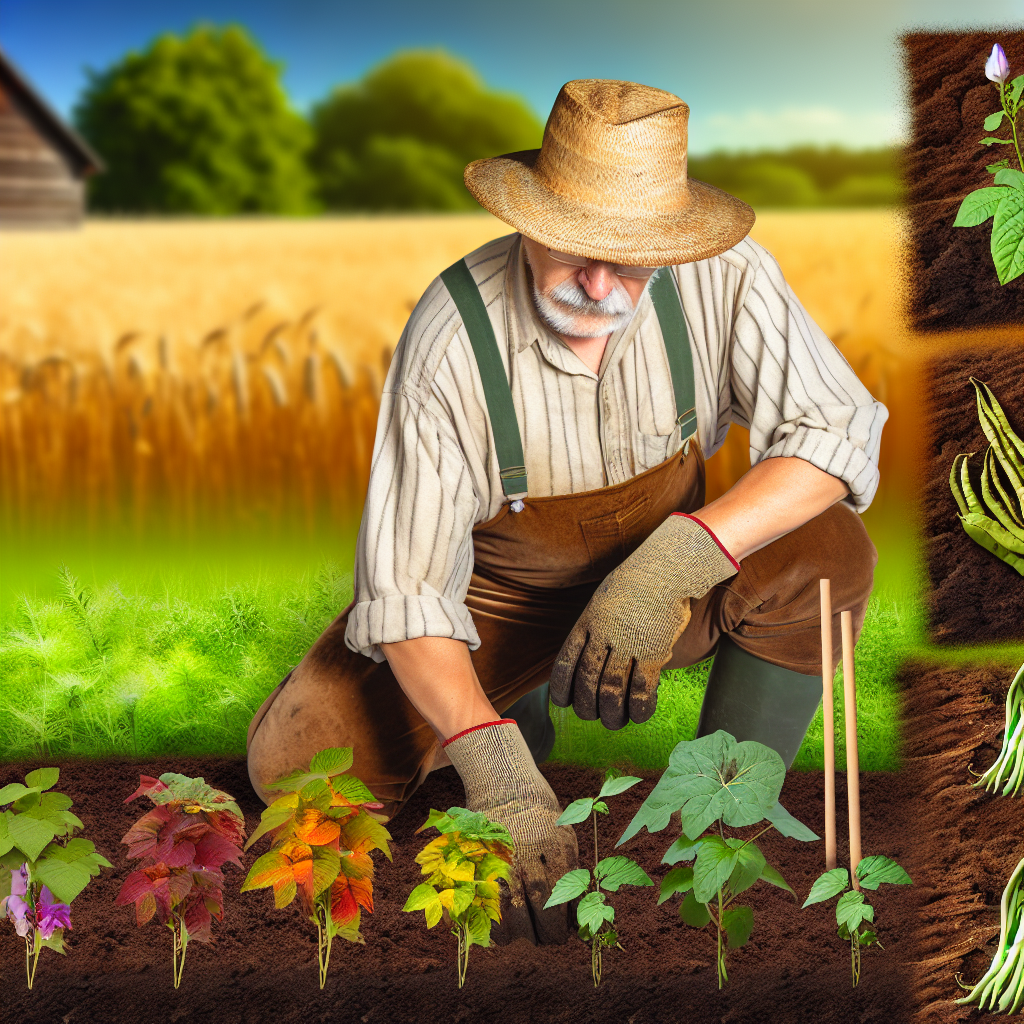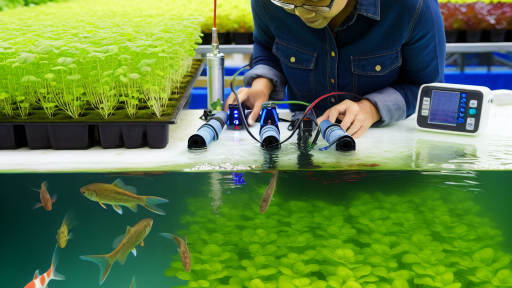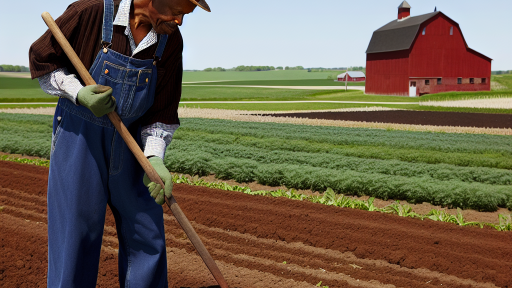Understanding Heirloom Seeds
Definition of Heirloom Seeds
Heirloom seeds are varieties that have been passed down through generations.
Typically, they are open-pollinated, meaning they can breed true from seed.
These seeds are often prized for their rich flavors and unique traits.
Moreover, they contribute to biodiversity in agriculture.
Farmers can select seeds based on personal preferences and local growing conditions.
Benefits of Heirloom Seeds
Using heirloom seeds offers numerous advantages for small farms.
One major benefit is the preservation of genetic diversity.
This diversity helps farmers adapt to changing climates and conditions.
Additionally, heirloom varieties often exhibit greater resilience to pests and diseases.
They typically require fewer chemical inputs compared to hybrid varieties.
Moreover, farmers can save seeds from heirlooms, fostering sustainability.
Heirloom products can also attract niche markets, enhancing profitability.
Finally, growing heirloom plants creates a connection to agricultural history.
Preparing Your Small Farm for Heirloom Gardening
Soil Health
Healthy soil is the foundation of successful heirloom gardening.
Without good soil, plants struggle to thrive.
Transform Your Agribusiness
Unlock your farm's potential with expert advice tailored to your needs. Get actionable steps that drive real results.
Get StartedStart by testing your soil regularly.
Soil tests reveal nutrient levels and pH balance.
Based on results, you can amend your soil properly.
Amendments for Soil Improvement
Organic amendments enhance soil fertility.
Compost is a fantastic choice for nutrient-rich soil.
Adding well-rotted manure also enriches the soil.
Both options improve soil structure and drainage.
Incorporate cover crops to enhance organic matter.
Legumes like clover fix nitrogen, benefiting subsequent crops.
Maintaining Soil Structure
Healthy soil structure promotes root growth.
Avoid compacting soil by minimizing heavy equipment use.
Instead, utilize hand tools for small areas.
Encourage earthworm activity through organic matter additions.
Improving Soil pH
The right pH supports optimal nutrient uptake.
Most heirloom plants prefer slightly acidic to neutral soil.
Use lime to raise pH or sulfur to lower it.
Monitor soil pH annually for ideal growing conditions.
Building Soil Fertility
Rotate crops yearly to prevent nutrient depletion.
Diverse planting helps break pest and disease cycles.
Incorporate green manures to boost soil nutrients.
Choose plant varieties that thrive in your local conditions.
By following these techniques, you will prepare your small farm effectively.
Selecting the Right Heirloom Varieties for Your Climate and Soil Type
Understanding Your Local Climate
Understanding your local climate is essential for successful farming.
Different heirloom varieties thrive in specific temperature ranges.
Showcase Your Farming Business
Publish your professional farming services profile on our blog for a one-time fee of $200 and reach a dedicated audience of farmers and agribusiness owners.
Publish Your ProfileConsider factors such as frost dates and growing season length.
For example, tomatoes prefer warm temperatures over 60°F.
Also, check humidity levels in your region.
Soi Type Assessment
The next step is assessing your soil type.
Heirloom plants have varying nutrient needs based on soil composition.
Identify whether your soil is sandy, clay, or loamy.
Sandy soils drain quickly but retain fewer nutrients.
Conversely, clay soils hold moisture but can become compacted.
Choosing Suitable Heirloom Varieties
Now that you understand your climate and soil, select suitable heirloom varieties.
Start by researching heirloom seeds that perform well in similar conditions.
Local gardening groups can offer valuable insights on successful varieties.
Consider growing a mixture of crops for biodiversity.
Popular choices include heirloom tomatoes, beans, and peppers.
Assessing Disease Resistance
Choose heirloom varieties that exhibit disease resistance.
Research common diseases in your area before selecting seeds.
Some heirloom varieties have natural resistances due to their genetic diversity.
This can result in healthier plants and higher yields.
Starting Small
When beginning your heirloom gardening journey, start small.
Test a few varieties each growing season before scaling up.
This approach helps you learn what works best in your conditions.
Furthermore, it reduces the risk of large-scale crop failure.
Discover More: Innovative Hydroponic Techniques for Farmers
Planting Techniques: Spacing, Depth, and Companion Planting with Heirlooms
Understanding Plant Spacing
Plant spacing affects plant health and yield.
Proper spacing allows plants to access sunlight efficiently.
Overcrowded plants can lead to competition for resources.
Base your spacing on the specific needs of each heirloom variety.
Consult seed packets for recommended distances between plants.
Additionally, consider the mature size of each plant.
Importance of Depth in Planting
Planting depth significantly impacts germination.
Some heirlooms prefer shallow planting for optimal growth.
Others need to be buried deeper to thrive.
Following depth recommendations ensures that seedlings emerge successfully.
Use soil moisture levels to determine the best depth.
Moistening soil also aids in seed adhesion.
Companion Planting Strategies
Companion planting enhances growth through beneficial relationships.
Certain heirloom varieties thrive when planted together.
For example, tomatoes and basil can boost each other’s flavor.
Meanwhile, pest-resistant plants help protect the delicate heirlooms.
Consider using aromatic herbs as companions for various vegetables.
Incorporating flowers can attract pollinators and beneficial insects.
Showcase Your Farming Business
Publish your professional farming services profile on our blog for a one-time fee of $200 and reach a dedicated audience of farmers and agribusiness owners.
Publish Your ProfilePlanning Your Garden Layout
Effective garden layouts maximize space and resources.
Start by sketching a simple design on paper.
Clearly mark the locations for each heirloom plant.
Incorporate pathways for easy access to plants.
This planning phase allows for adjusting before planting.
Consider the sun patterns and wind protection in your layout.
Adjusting Techniques Seasonally
Adapting techniques based on seasons is crucial.
Different heirloom varieties may perform better in specific climates.
Monitor seasonal weather trends to make necessary adjustments.
Modify planting depths and spacing as needed for each season.
Flexibility helps in achieving optimal growth conditions.
Find Out More: Heirloom Gardening Tools Every Farmer Needs
Organic Pest and Disease Management in Heirloom Gardens
Introduction to Organic Methods
Organic gardening focuses on natural methods to control pests and diseases.
This approach promotes a healthy ecosystem on your farm.
Heirloom plants benefit greatly from organic management techniques.
Understanding Common Pests
Knowledge of common pests is essential for effective management.
Common pests include aphids, beetles, and caterpillars.
Identifying these pests early can prevent significant damage.
Identifying Symptoms
Insects often leave visible signs on plants.
Look for holes in leaves or sticky residue on surfaces.
Both can indicate pest activity in your garden.
Natural Predators
Encouraging natural predators can help control pest populations.
Ladybugs and lacewings are effective at managing aphids.
Creating an environment that attracts these predators is beneficial.
Planting Companion Species
Companion planting helps deter pests naturally.
Marigolds repel nematodes and other harmful insects.
Consider planting basil near tomatoes to ward off pests.
Utilizing Organic Pesticides
In some cases, organic pesticides may be necessary.
Neem oil and insecticidal soap are safe options.
These products target specific pests without harming beneficial insects.
Application Tips
Apply pesticides in the evening to minimize harm to pollinators.
Ensure thorough coverage of affected plants for effectiveness.
Always follow the instructions provided on the label.
Managing Plant Diseases
Preventing diseases is critical to maintaining plant health.
Rotate crops annually to disrupt disease cycles.
Healthy soil contributes to stronger plants that resist diseases.
Maintaining Soil Health
Adding organic matter to soil improves its structure.
Compost enhances microbial activity, promoting plant health.
Use cover crops to restore nutrients and prevent erosion.
Monitoring and Record Keeping
Regular monitoring of your garden helps identify issues early.
Showcase Your Farming Business
Publish your professional farming services profile on our blog for a one-time fee of $200 and reach a dedicated audience of farmers and agribusiness owners.
Publish Your ProfileMaintain a journal to track pest sightings and treatments used.
This information aids in understanding patterns and improving strategies.
See Related Content: Essential Nutrients for Hydroponic Growth

Watering Strategies for Heirloom Crops
Irrigation Methods
Irrigation plays a vital role in growing heirloom crops effectively.
Understanding various irrigation methods helps maximize crop yield.
Drip irrigation delivers water directly to the plant roots.
This method reduces water waste significantly.
Additionally, it minimizes weed growth by avoiding wetting soil between plants.
Sprinkler systems can also be beneficial for larger fields.
They distribute water evenly over a wide area.
However, care should be taken to prevent leaf wetness.
Excess wetness can lead to fungal diseases.
Efficiency in Water Usage
Efficient water usage is critical for sustainable farming.
Using rain barrels can help in collecting and storing rainwater.
Integrating these barrels into your watering strategy reduces dependency on municipal sources.
Additionally, soil moisture sensors can optimize watering schedules.
They monitor soil conditions and ensure crops receive adequate moisture.
Cover cropping enhances soil moisture retention naturally.
This practice improves soil structure while reducing evaporation.
Timing and Frequency
When to water is as crucial as how much to apply.
Watering in the early morning prevents evaporation losses.
It allows plants to uptake moisture throughout the day.
During dry spells, check soil moisture levels regularly.
Deep watering encourages strong root development.
Adjust the watering schedule based on the season and weather conditions.
Benefits of Effective Watering Strategies
Implementing efficient watering strategies enhances overall plant health.
Healthy plants are less prone to diseases and pests.
Moreover, proper moisture levels improve the flavor of heirloom crops.
This increases their market value and demand.
Ultimately, investing in water management systems leads to long-term sustainability.
Find Out More: Protecting Heirloom Varieties from Pests
Harvesting Techniques: When and How to Harvest Heirloom Crops for Maximum Flavor
Identifying the Right Time for Harvest
Timing plays a crucial role in harvesting heirloom crops.
Observe the vegetables for color change and size.
For fruits, watch for ripeness and aroma.
Check seed pods for fullness before harvesting legumes.
Frost-sensitive crops should be harvested before the first frost.
Harvesting Techniques for Common Heirloom Crops
Different crops require specific harvesting methods.
With tomatoes, gently twist and pull to detach them from the vine.
For squash, use pruning shears to avoid damaging the plant.
Root vegetables, such as potatoes, require careful excavation.
Showcase Your Farming Business
Publish your professional farming services profile on our blog for a one-time fee of $200 and reach a dedicated audience of farmers and agribusiness owners.
Publish Your ProfileUse a digging fork to lift them out without bruising.
Tools for Efficient Harvesting
Having the right tools streamlines the harvesting process.
Hand saws or shears work well for woody stems.
Basket-type harvesters reduce the risk of damage during collection.
Ensure you wear gloves to protect your hands from prickly plants.
Remember to bring plenty of containers for your harvest.
Post-Harvest Handling for Flavor Preservation
Proper handling post-harvest enhances flavor longevity.
Keep heirloom fruits and vegetables cool and shaded immediately.
Wash gently to remove dirt without bruising the skin.
Store crops in appropriate conditions to maintain freshness.
Root vegetables benefit from being stored in cool, dark places.
Testing for Peak Flavor
Flavor profiles vary among heirloom varieties.
Taste a sample to determine if the crop is ready for harvest.
Inspect texture; ripe fruits should yield slightly to pressure.
Record your observations for future reference and improvements.
Believe in your instinct and experience for best results.
Saving Seeds from Heirloom Plants
Best Practices for Seed Saving
Seed saving preserves heirloom plant varieties effectively.
First, choose healthy, mature plants for seed collection.
Harvest seeds only when they reach full maturity.
Next, clean the seeds gently to remove any debris.
Label each seed batch with the plant variety and date.
Store seeds in a cool, dry place to ensure longevity.
Regularly check the seeds for moisture or pest issues.
Techniques for Specific Plants
Different plants require unique seed-saving techniques.
For tomatoes, scoop seeds and ferment them before drying.
For beans, allow pods to dry fully on the plant.
When saving lettuce seeds, allow the plants to bolt and flower.
Collect the fluffy seeds after the flowers dry completely.
Storage Solutions for Saved Seeds
Proper storage protects your seeds from damage.
Use airtight containers like glass jars for storage.
Cool and dark environments are ideal for seed longevity.
You can use a refrigerator or a cool basement.
Label containers clearly to avoid confusion later.
Maintaining Seed Viability
Regularly test your saved seeds for viability.
Conduct a simple germination test for this purpose.
Use a damp paper towel to sprout a few seeds.
Count the successful sprouts to assess viability.
This ensures you plant seeds that will grow vigorously.
Additional Resources
What are some possible Cash Crops available to the small farmer …
Market Gardener Institute: Learn Market Gardening & Organic Farming
Showcase Your Farming Business
Publish your professional farming services profile on our blog for a one-time fee of $200 and reach a dedicated audience of farmers and agribusiness owners.
Publish Your Profile



